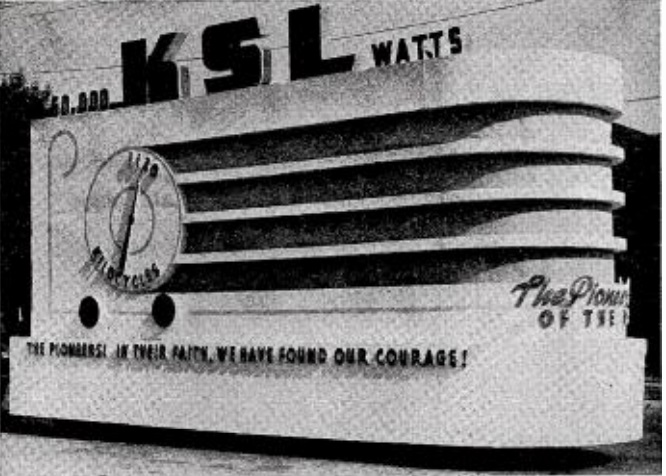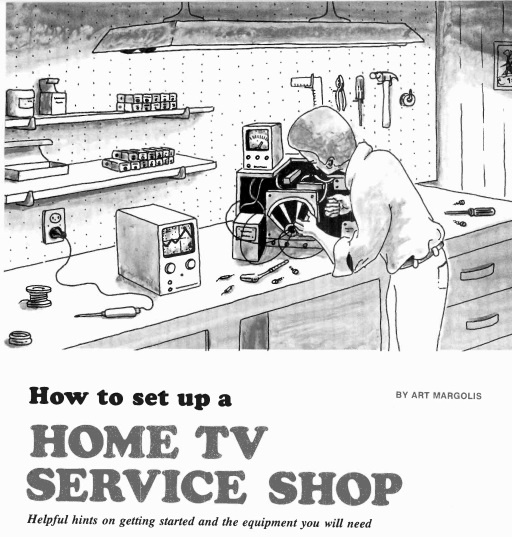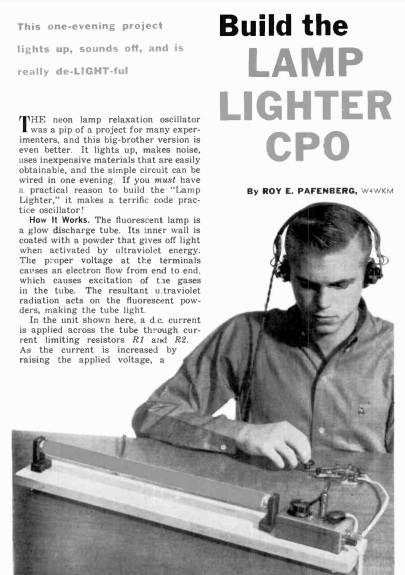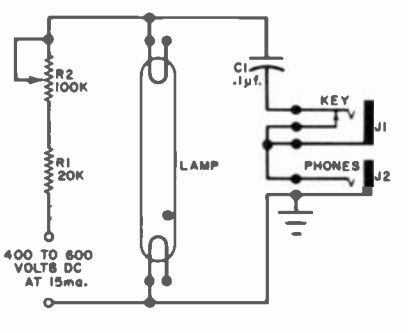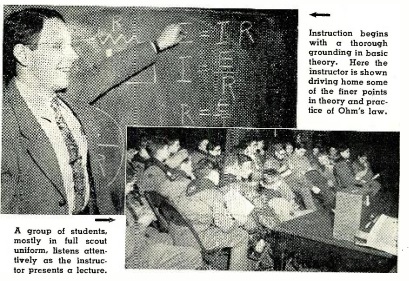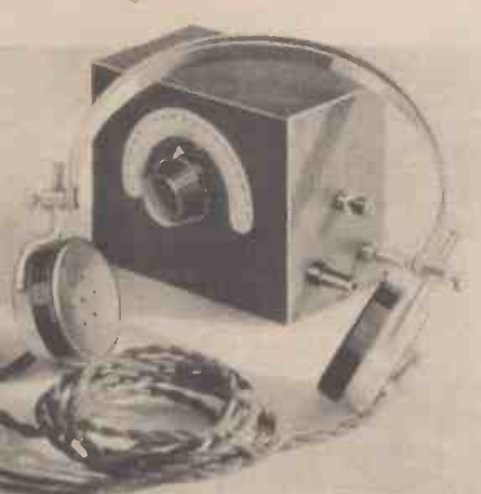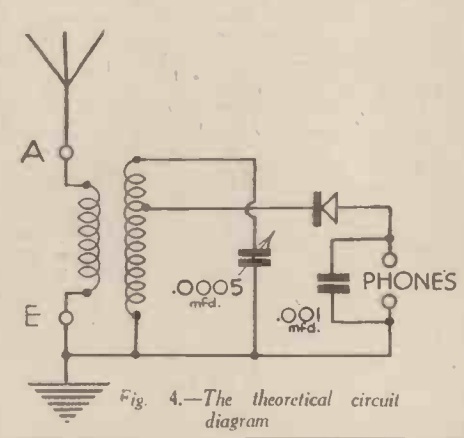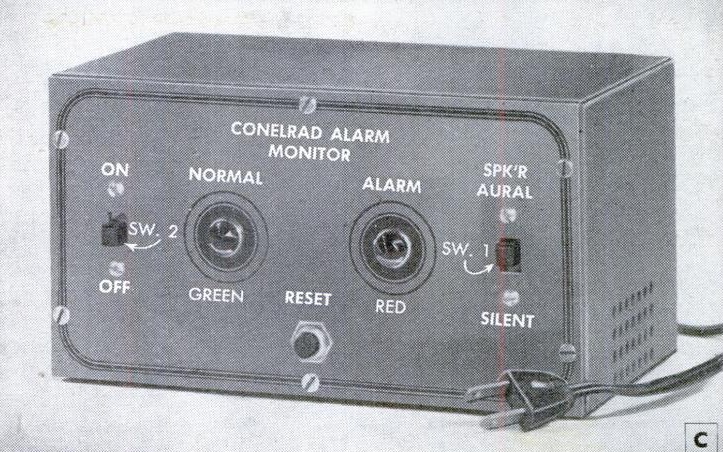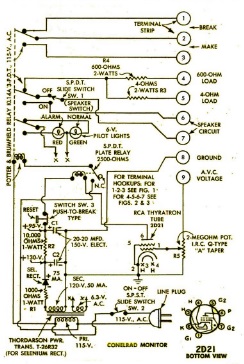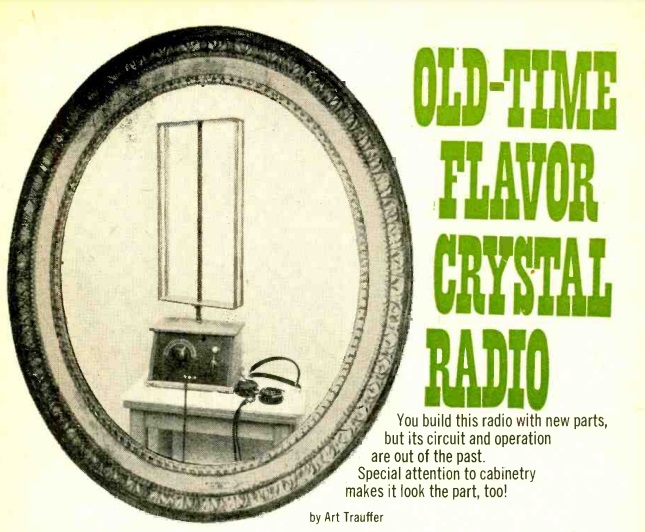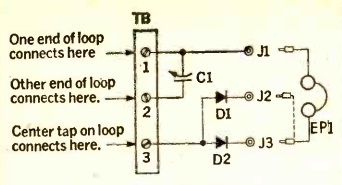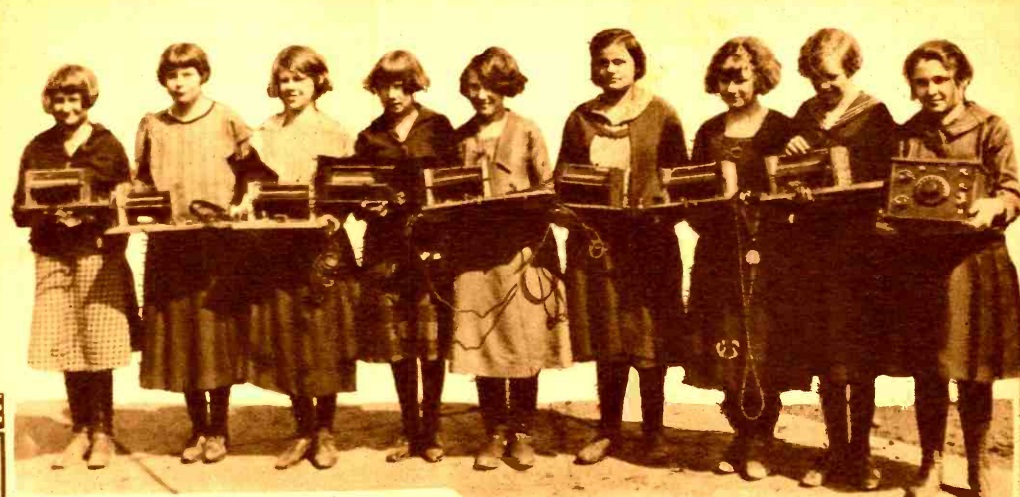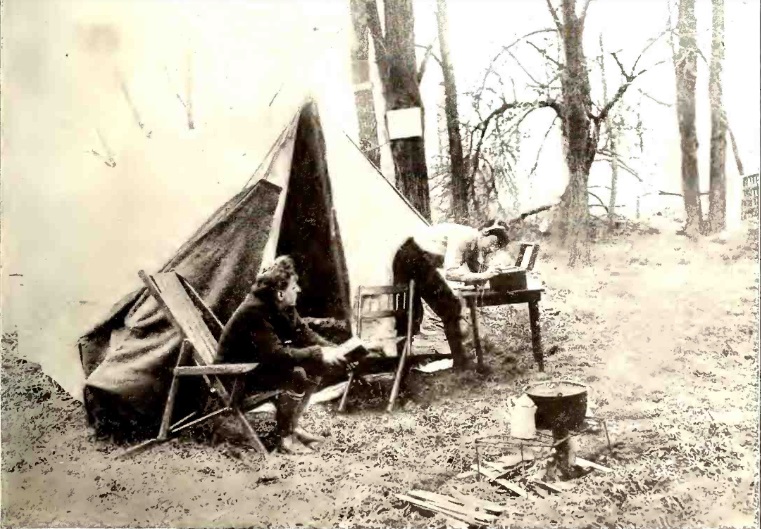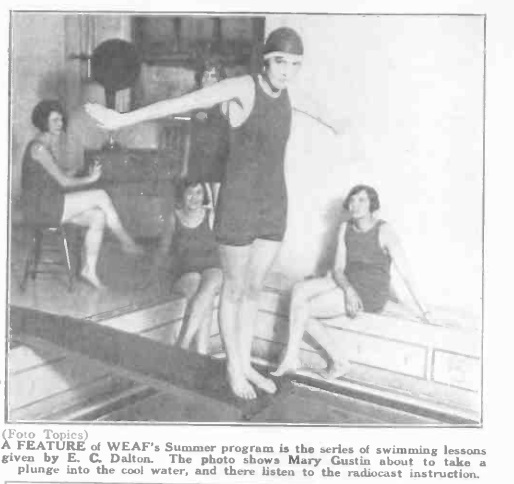 Radio has been used over the years to provide instruction in many different disciplines. But for some reason, this one never caught on. A hundred years ago today, the August 16, 1924, issue of Radio World carried this photo showing radio being used to give swimming lessons.
Radio has been used over the years to provide instruction in many different disciplines. But for some reason, this one never caught on. A hundred years ago today, the August 16, 1924, issue of Radio World carried this photo showing radio being used to give swimming lessons.
The photo shows one Mary Gustin, and the swimming instructor is one E.C. Dalton, who is behind the microphone of New York station WEAF. She is about to plunge into the water, where she will listen in to her instructions.

